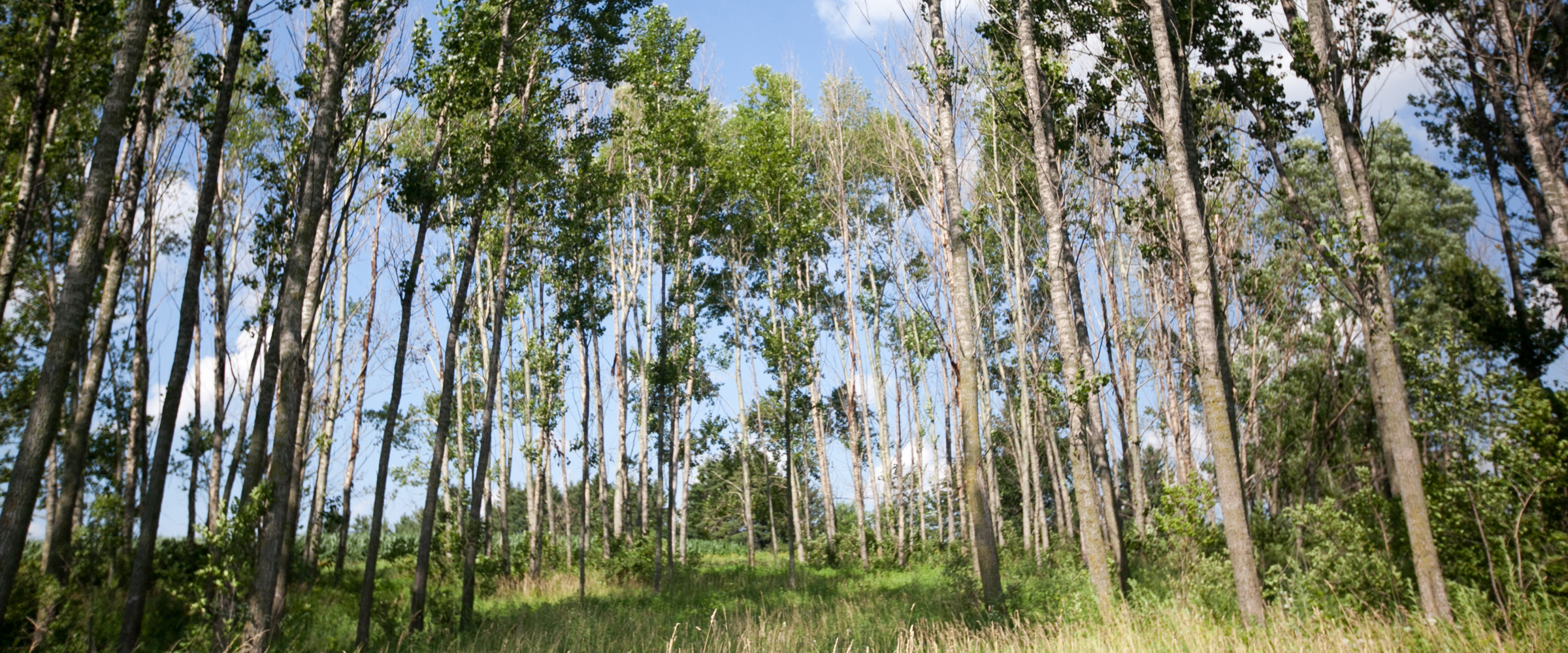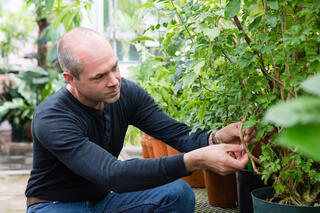
Lignin, a substance that makes up roughly a quarter of plant biomass, reinforces plant structures and offers a defense system against microbes. But this complex substance is also notorious for being difficult to degrade, creating challenges for biofuels producers and paper manufacturers alike.
Great Lakes Bioenergy Research Center (GLBRC) scientists, however, are making progress on a goal to make something valuable out of lignin, or at least to separate it more efficiently from other plant components. Realizing this goal could allow biofuels and paper to be made in cheaper, more efficient, and more environmentally friendly ways.
John Ralph, now a UW–Madison professor of biochemistry, worked with Shawn Mansfield, a professor of forestry at the University of British Columbia, to genetically engineer the lignin of poplar to contain weaker bonds. The resulting lignin, called “Zip-Lignin,” easily breaks down under mild chemical conditions, making it easy to degrade and extract from other plant components.
For paper makers, zip-lignin has real possibility. In typical “kraft pulping” paper-making operation, the end goal is to get strong, white paper by extracting as much of the lignin as possible out of the pulp through chemical reactions. To test zip-lignin’s potential benefits to the paper industry, GLBRC scientists and engineers recently harvested and analyzed trees genetically altered to have higher levels of zip-lignin.
In their study, Ralph, GLBRC associate scientist Steven Karlen, UW–Madison associate professor of biological systems engineering Troy Runge, and former post-doctoral researcher Shengfei Zhou put these trees head-to-head against ordinary hybrid poplar trees in the paper pulping process. The best performing version of the zip-lignin poplar – “line 7” – produced pulp that could be processed in less-severe conditions, achieving a yield increase of 1.4 percent. That might sound like a razor-thin margin of victory, but in pulp production it could translate to a benefit to the industry and consumers.

“For a single pulp line, a few percentage points increase in yield could mean the difference between a net loss and a profit of millions,” says Runge, who, before joining UW–Madison, worked in the pulp and paper industry at Kimberly Clark Corporation.
GLBRC researchers also say that this increase is only the beginning. As they find ways to further increase zip-lignin levels in future lines of poplar, that yield should increase. The team also found that zip-lignin poplar needed fewer whitening agents, decreasing the amount of chemical processing needed to make an end-product.
“While some of these chemicals are recycled throughout a paper-making process, it’s still cheaper for companies to use less, and that comes with fewer environmental concerns” says Karlen.
Runge is now analyzing ways paper companies could optimize their pulping processes for zip-lignin poplar. Mills could potentially maximize throughput, use less chemicals and energy, or take advantage of higher yields. “This could create another revenue stream for paper companies willing to take advantage,” he says.